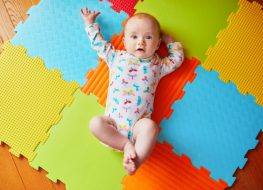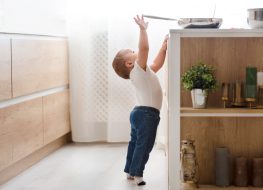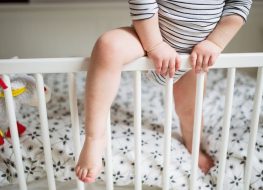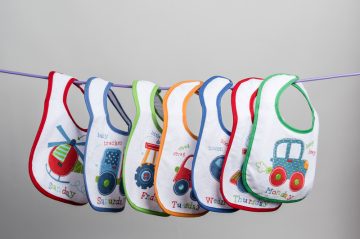
Studies have shown that specific changes occur in women’s brains during pregnancy and after birth. MRIs in scientific research have shown that the brain’s gray matter decreases, allowing mothers to be more sensitive to social signals. Their ability to observe and know their babies’ needs increase and they become more protective.
This change can explain why mothers are eagle-eyed about almost every detail of the supplies they provide for their babies—even when it comes to bibs!
In this blog post, we’ll help you figure out how many different types of bibs your baby can use. We’ll also dive into the details of why you should get these baby bibs, and when.
Bib #1: Feeding Bibs
The first and most common bibs you’ll see are silicone baby bibs. These bibs come in different designs, making them baby-friendly. The baby feeding bib also has a pouch that can catch food bits from babies who are still learning to eat. Because it is made of silicone, it is easy to clean.
Why Does Your Baby Need Feeding Bibs?
Mealtimes with little ones still learning how to eat are expectedly messy. Your baby needs feeding bibs to avoid making so much mess. As a parent, you are in charge of the cleaning, so having a silicone baby bib is also beneficial for you.
You can save time and effort from washing stained clothes, and your little one can enjoy mealtimes with abandon. High chair trays and cushions are also spared from the mess, as the silicone pouch can catch falling food. The kitchen floors you spent so much cleaning will also be saved from food crumbs and liquid spills, all thanks to a silicone baby bib.
When Should a Baby Start Wearing Feeding Bibs?
It would be best for babies to wear feeding bibs at six months. This is the age when they begin taking in solids. If you feed your little one by hand, then you may not need a silicone baby bib as much as there won’t be too much mess.However, if you are a parent who encourages independence, you can begin with these bibs.
Bib #2: Drool Bibs
The next type of bib you’ll need is for your drooling little one. As a caregiver, you must wipe off your little one’s drool. Drool bibs are designed with absorbent materials, usually cotton, to ensure that it serves their purpose. Having a drool bib readily available, hanging around their neck, makes your task easier.
Why Does Your Baby Need Drool Bibs?
Bacteria travel faster on wet and moist surfaces. When your little one’s saliva is left unwiped, they can get it on their things and toys, making these the perfect bacteria breeding ground—a cause of sickness. Your baby needs drool bibs to ensure that their drool is wiped off as often as possible.
Without a bib, a baby’s drool can soak their chin, neck, and clothes. When the chin and neck are wet, your little one can suffer skin irritation. Although minor, skin irritation can lead to drool rashes and, worse, infection. And you can dodge all these by letting your baby wear drool bibs.
When Should a Baby Start Wearing Drool Bibs?
Babies should begin wearing these bibs when they begin gripping and biting on things. This is because when your baby starts to grip and bite, the brain gets signaled that the baby is preparing themselves for chewing and swallowing—essential skills needed for taking in solids.
Drool bibs are needed even more when they eat solids at six months. The salivary gland produces more to help the baby munch and swallow food. Consequently, this is also the age when babies start growing their teeth, another reason why they drool a lot.
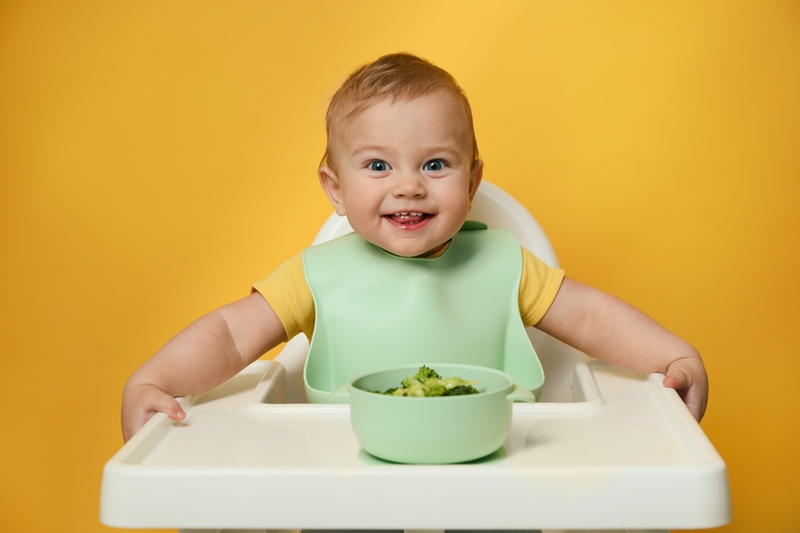
Bib #3: Bandana Baby Bibs
Wearing bibs is practical, but it can also be stylish. The bandana bibs will get you all excited about dressing up your little one because of their designs.
To begin with, the bandana has the classic inverted triangle style, like that of a cowboy’s. Their designs range from bibs with simple hues to those with eye-catching patterns and cartoon characters.
Why Does Your Baby Need Bandana Bibs?
Your baby needs a bandana bib as another cloth to wipe off their drool. These function similarly to a drool bib. You can conveniently keep your baby’s chin and neck dry, preventing rashes and bacteria from spreading.On top of this, you’ll also get the excitement of dressing up your baby every day.
When Should a Baby Start Wearing Bandana Bibs?
You can let your baby wear bandana bibs as soon as they are born. During these months, the bandana bibs can serve as a fashion accessory and a cloth to wipe off milk during feeding.
By their third month, just as they begin holding and biting onto things, you can use bandana bibs too. You can also use the bandana bibs during mealtime, but take note of the extra work you need to do after (i.e., cleaning and washing them).
Bib #4: Apron/Smock Bibs
As the name of the bib suggests, these mimic the design of an adult apron that covers the chest up to the upper or lower areas of the legs. Cloth or waterproof materials are used for this bib. To make the design friendlier for mealtime activities, some apron bibs (also called smock bibs) have a pocket to catch food pieces or crumbs. They are attached over the nape and tied around the waist to keep them in place.
Why Does Your Baby Need Apron/Smock Bibs?
Your little one will engage in plenty of activities, especially as they grow and develop their motor skills. From worrying only about drooling and eating, your baby’s day will involve drawing, painting, playing with clay or sand, and more! These activities will help them be exposed to various textures and satisfy their curious minds.
However, as they explore, they’ll make a mess too. Expect paints, colouring materials, clay, or sand to be all over the place. Yet, you can keep their clothes clean using aprons and smock bibs.
When Should a Baby Start Wearing Apron Bibs?
Babies can begin drawing, painting, and other creative activities as soon as they begin learning how to grip at their third month. Caregivers need to keep an eye on them to ensure their safety. Babies should wear apron bibs when engaging in the activities mentioned above.
Parents may also begin using them as soon as babies start eating solids. The longer covering of the apron bib ensures the clothes of your baby will be free from any food crumbs or spills from liquids and food.
![]()
Bib #5: Disposable Bibs
Finally, you also have the choice to use disposable bibs for your baby. Designs of disposable bibs are similar to feeding bibs. They are made from waterproof materials, have a food pouch, and have kid-friendly designs.
Disposable bibs have adhesives to keep them in place. And since these are disposable, many manufacturers try as much as possible to produce environmentally-friendly ones using biodegradable materials.
Why Does Your Baby Need Disposable Bibs?
Your baby needs disposable bibs so that they have supplies that can keep their clothes clean wherever they go. Are you the type of family who likes eating out? Then, a pack of disposable bibs in the baby bag will be handy. Disposable bibs are sold in packs, so your baby has something to use wherever your family might be.
Meanwhile, when traveling, not all places you will stay in have laundry service. You may also not want to wash bibs during your downtime. In these cases, you can pull out a disposable bib and throw it after use.
When Should a Baby Start Wearing Disposable Bibs?
Your baby can start wearing disposable bibs anytime you are outside or traveling. They can use it when they begin drooling and start eating solids. However, it is better to use a disposable one when you are out and about so your baby bag won’t have a pile of dirty bibs after going out or traveling.
So, How Many Bibs Do I Need?
As you likely know by now, bibs are an essential part of parenting, and the kind you choose for your baby depends on their age and the type of activity they will be doing. So, if you’re asking “how many bibs do I need?”—you can’t go wrong with having all the types mentioned here readily available!
And if you need a quality bib right now, why not get what we have here at Ashtonbee! Our silicone baby bibs are simple, but they are safe, durable, easy-to-clean, and have baby-friendly colors. Buy some today!

